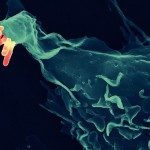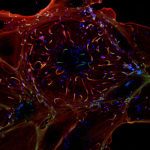Présentation
DMP of the project : https://doi.org/10.5281/zenodo.7074306
A common strategy of bacterial pathogens is active or passive uptake into host cells. There, they can localize within a bacterial containing vacuole (BCV) or access the host cytoplasm through BCV rupture. Hence, intracellular pathogens are often classified as vacuole-bound or cytoplasmic. Recently, this definition has been challenged by the discovery that many vacuole-bound pathogens, including Mycobacterium tuberculosis and Salmonella enterica, access the host cytoplasm, and by the insight that cytoplasmic bacteria, like Shigella flexneri or Listeria monocytogenes, do not always escape the BCV.
Despite this increasing complexity, a precise understanding lacks for why and how a pathogen “chooses” between a BCV or the cytoplasm and yet this is very important: because of differential pathogen sensing in membrane-bound and cytoplasmic compartments, intracellular localization leads to induction of different host responses. Therefore, a comprehensive understanding of the processes controlling BCV integrity is not only essential, but can provide new therapeutic targets. Our previous research has implemented innovative fluorescence microscopy to track the invasion steps of pathogenic bacteria. We have further integrated a large-volume, correlative, light/electron microscopy (CLEM) workflow via focused ion beam scanning electron microscopy. With this grant we compare the strategies of different intracellular pathogens to decipher the factors that shape their intracellular localization.



